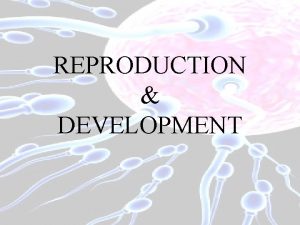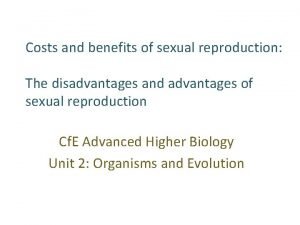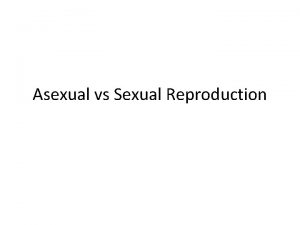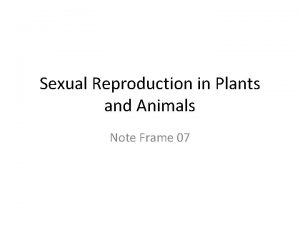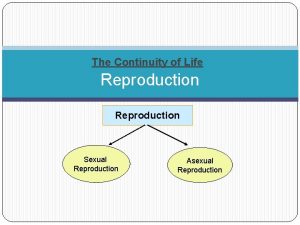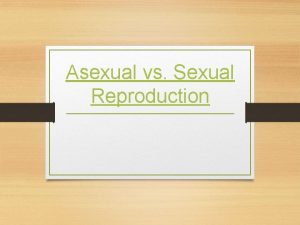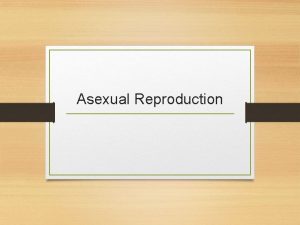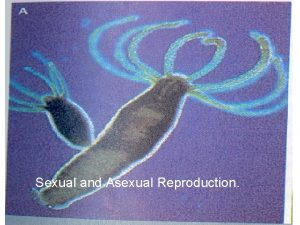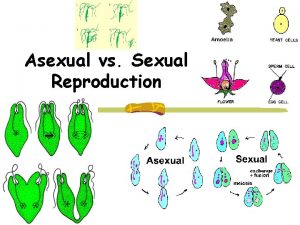Asexual vs Sexual Reproduction Asexual reproduction 1 parent













- Slides: 13

Asexual vs. Sexual Reproduction

Asexual reproduction 1 parent cell Offspring genetically identical The primary form of reproduction for singlecelled organisms such as archaea, bacteria, and protists. Some plants and fungi reproduce asexually as well.

Sexual Reproduction 2 parents cell Results in increasing genetic diversity of the offspring. Characterized by two processes: meiosis, halving of the number of chromosomes fertilization, combining two sex cells (can be internal or external) Primary method of reproduction for most visible organisms, including almost all animals and plants.

Binary Fission Asexual Cell splits and replicated DNA goes with each part Prokaryotes, Bacteria + Fast and easy - Everybody has the same DNA

Binary Fission

Budding Asexual Offspring grows out of parent Yeast, hydras + Fast, somewhat easy - Same DNA

Budding

Spores Asexual Prokaryotic and eukaryotic organisms such as fungi Spores released and carried by the wind +can survive harsh conditions -no genetic variation; only develop if they land in the right conditions

Vegetative Reproduction asexual Some plants (potatoes) New plants can grow from roots, stems, or leaves; mitosis makes it possible +only one parent needed -lack of genetic variation

Fertilization Sexual: Requires two sex cells – egg and sperm The egg and sperm join to form an entirely new organism Fertilization can take place internally (mammals) or externally (most fish) Mammals, reptiles, fish, amphibians, birds, plants

Pros and Cons of Fertilization - Consumes a lot of energy; takes longer time for offspring to form + results in offspring genetically different from parent

Pollination

 Sexual vs asexual reproduction venn diagram
Sexual vs asexual reproduction venn diagram Sexual reproduction vs asexual reproduction venn diagram
Sexual reproduction vs asexual reproduction venn diagram Hare lynx
Hare lynx Asexual or sexual reproduction
Asexual or sexual reproduction Chromosome number of animals
Chromosome number of animals Example of asexual reproduction
Example of asexual reproduction Parthenogenesis asexual reproduction
Parthenogenesis asexual reproduction Mitosis sexual reproduction
Mitosis sexual reproduction Plants and animals reproduction venn diagram
Plants and animals reproduction venn diagram Sexual or asexual reproduction
Sexual or asexual reproduction Difference of sexual and asexual reproduction
Difference of sexual and asexual reproduction Where does cactus store water
Where does cactus store water Sample example
Sample example Sexual or asexual reproduction
Sexual or asexual reproduction



